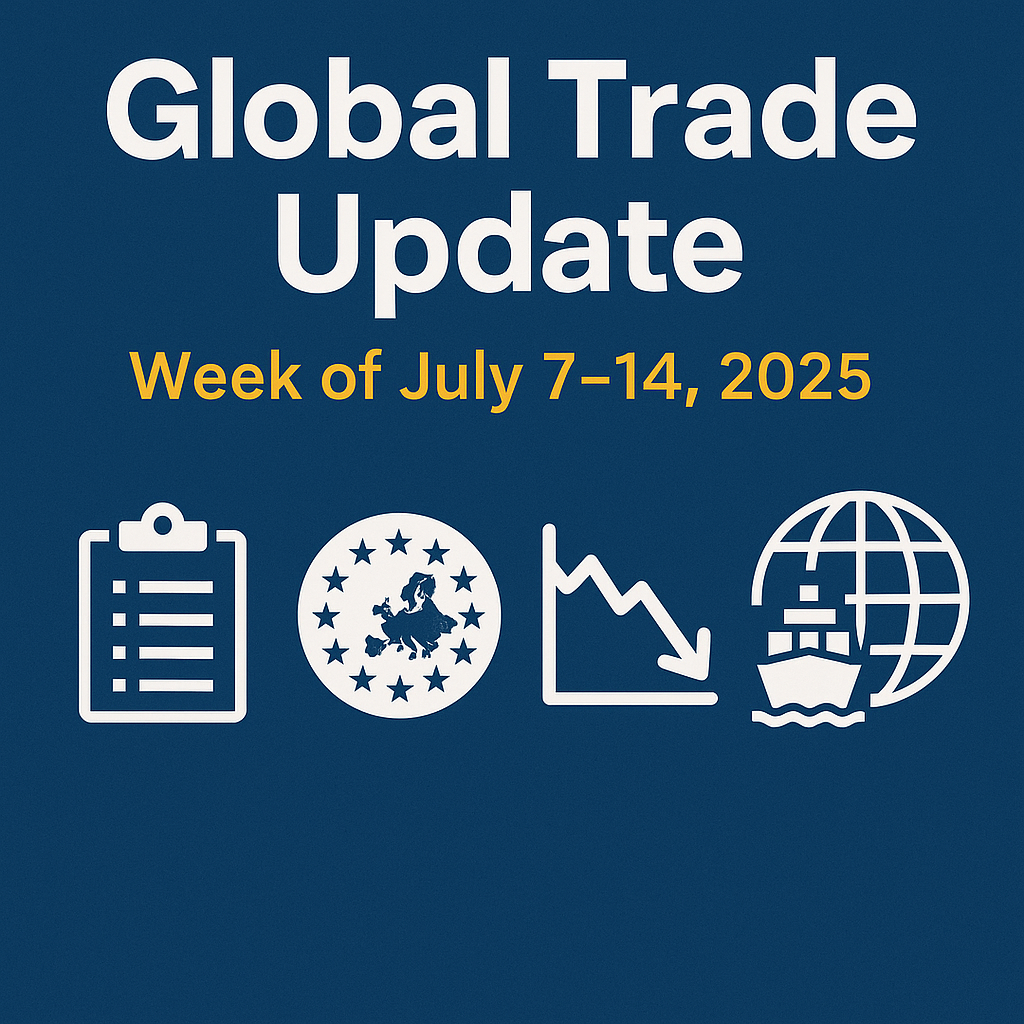1. U.S. Tariff Surge Sparks Global Reaction
- Trump’s sweeping tariff announcements raised new levies: 50% on copper imports, higher duties on Brazil, and further increases for 21 additional countries—including close allies like Japan, Korea, and Canada—effective August 1
- IMF sounded the alarm, highlighting that rising tariff unpredictability could weigh on global industrial and trade growth
2. EU’s Strategy: De-escalation with Guardrails
- The European Commission delayed retaliatory tariffs on €21 billion of U.S. imports until August 1, allowing time for negotiation while preparing a second package covering €72 billion of imports.
- EU leaders emphasized diplomacy: Ursula von der Leyen sees a “window for negotiation,” Maroš Šefčovič argued for countermeasures if talks collapse.
- In parallel, the EU is accelerating trade deals with Indonesia (political agreement by September) and exploring new pacts with Mercosur and Pacific Bloc nations to lessen U.S. dependency.
3. Market Signals: Volatility With Opportunity
- Stock markets rebounded in early July, but strategists caution of potential shocks triggered by further trade turbulence .
- The FTSE 100 outperformed continental Europe, aided by existing U.K.–U.S. trade ties .
- Commodities saw mixed trends: gold rose on safe-haven flows, China’s export strength supported base metals .
4. Asia’s Countermeasure: Export Resilience
- China’s June exports rose 5.8% year-over-year, driven partly by tariff postponements and pent-up global demand
- Deloitte estimates global merchandise imports down ~3.8% year-over-year, led by an 18% decline in U.S. imports—reflecting input shortages and ongoing trade restriction impacts.
5. Macro Outlook: Still Up, but Fragile
- UNCTAD reports global trade rose about 1.5% in Q1 2025, and looked to accelerate to 2% in Q2; trade in services remains the strongest driver (+9%) .
- IMF reaffirms moderated global growth (~3.3%), yet flags trade protectionism and policy volatility as key downside risks .
Key Takeaways
- Trump’s tariff push marks a major shift toward protectionism, fueling uncertainty across global markets.
- EU strategy blends patience and preparedness—steering between negotiation and retaliation.
- Markets remain resilient short-term, but could react sharply to escalations or failed talks.
- Emerging markets & Asia benefit temporarily, but remain exposed to U.S. demand shifts.
- Global trade growth persists, yet faces headwinds from policy unpredictability and weakened import trends.
Outlook Ahead
| Trigger | Potential Impact |
| August 1 Deadline | If no deal emerges by the deadline, expect new tariffs on EU, Mexico, Canada—raising inflation and supply chain costs globally |
| Earnings Season | Corporate Q2 earnings (e.g. banks, automakers, consumer staples) will reveal early tariff impact |
| Negotiation Channels | Talks at the upcoming Osaka Expo may reshape early-stage U.S.–Japan or broader U.S.–Asia agreements |


